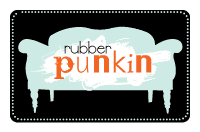I got this tutorial from this site : www.stampohmania.com/pages/howto/wfpix.htm and the pattern can be gotten from this site: www.stampohmania.com/pages/howto/waterfall.htm.
Here is the tutorial by Kathy Berger on Rubber Art 8/20/02:
Materials
Printed copy of pattern
1 sheet of 8.5" x 11" cardstock
1 5.5" x 4.25" folded card
sharp craft knife for cutting pattern
Straight edge for cutting pattern
Glues
Pencil or disappearing ink marker
Stamps and inks of your choice
Cut The Pattern:
This si the most critical part of the whole project. The measurements, cuts, and folds must be accurate or the project will not cascade correctly once assembled.
Use repositioning glue on the pattern, and attach it to the cardstock, and to cut through both the pattern and the cardstock simultaneiously. This enables you to cut the pattern quickly and accurately without having to do all the measuring and marking. The drawback, of course, is that the pattern is destroyed so you have to print off a new one each time. But I can live with that!!
Cut along all solid lines, including the slot. There is an area on the flap that has an extra heavy line....this should be cut out completely, leaving a narrow gap along the edges of the tab. Discard the pieces marked on the pattern as scrap. You should now have 5 squares of cardstock (flaps) and one mechanism piece.
Score and Fold the Mechanism
Using the pattern as a guide, score the mechanism on the WRONG side of the cardstock on every dotten line.
Fold the mechanism at every score line so that there is a mountain fold on teh RIGHT side of the cardstock at every dotten line in the pattern.
(for the uninitiated, the terms mountain and valley folds come from Origami. A mountain fold would be made by putting the wrong sides together, a valley fold would be made by putting the right sides together.)
It is okay at this stage to lightly crease the score lines, or you can stamp the mechanism first if you prefer. For the purposes of this class, it might b better for you to simply put one of the cards together, and worry about stamping one later. It is a lot easier to stamp one AFTER you have seen one to work...
Stamp the Flaps
When you are stamping the card it is best to stamp the squares BEFORE attaching them. The best way to stamp them is to use temorary adhesive to attach them to the mechanism and use either a pencil or disappearing ink marker to show where the flaps would overlap. Then remove the flaps in order and stamp them, keeping the overlap in mind as you plan and execute your stamped images. Finally the squares would be reattached, permanently this time, to the mechanism in the same order and location as in the planning stage.
Having said all that, I am going to go through this process one step at a time with you.
I am going to take the last square, square#5, and attach it by a small amount of temp. adhesive, just barely below the edge of the fold on the mechanisim closest to the cut slot.
Next, I attach the square #4 to the edge of the next higher fold.
I am going to continue attaching squares to the mechanism in this manner until I have all the squares attached.
Ok, now they are all temporarily attached to the folds of the mechanism . Now, I am going to mark each of the squares lightly with a pencil so that I will know which parts are visible when the mechanism is flat, and which parts will be exposed as they cascade.
I will now remove the flaps and stamp them according to what I know is visible and not visible in the card.
Remember !! The part that is visible when the card is flat STAYS visible when the card cascades, but all the other parts of the flap become visible at that time, too, including the back.
Attach The Flaps
Once I stamped I will permanently attach the flaps to the card in the same location in which they were temporarily affixed. Be sure that the glue is placed in a narrow line right at the top edge of the flap and that it extends completely to the corners of the flap. The permanent monoadhesive is really perfect for this....
Arm the Mechanism
To "arm" the mechanism is to make it possible for it to work. All that is needed is for this process is to take the long tab that is extended above the flaps back along the wrong side of the mechanism, and then through the slot to the right side of the mechanism. Pulling on this tab will cause the cascade.
Finish the card
To attach the mechanism to the card, put glue on the right side of the mechanism on the two panels to the far left and far right of the mechanism, next to the lines which have been scored to allow these panels to fold under the mechanism. These panels are the only portions of the mechanism that are glued to the card, which enables the rest of the mechanism to move freely. You may attach the mechanism to either the outside or the inside of the card.
Suggestions
Now that we've completed the waterfalls, I'd like to make some suggestions for stamping them...
Small images work best. The larger images won't fit in the small hidden portions of the flaps without hanging out and spoiling the visual impact. I hope you'll have s lot of fun experimenting with these cascading cards...I sure have!!
Try one out, would love to see what you come up with :)!
Wednesday, July 4, 2007
Waterfall card
Posted by maiahs_momma at 12:09 PM
Labels: Waterfall cards
Subscribe to:
Post Comments (Atom)












 *************
*************




0 comments:
Post a Comment